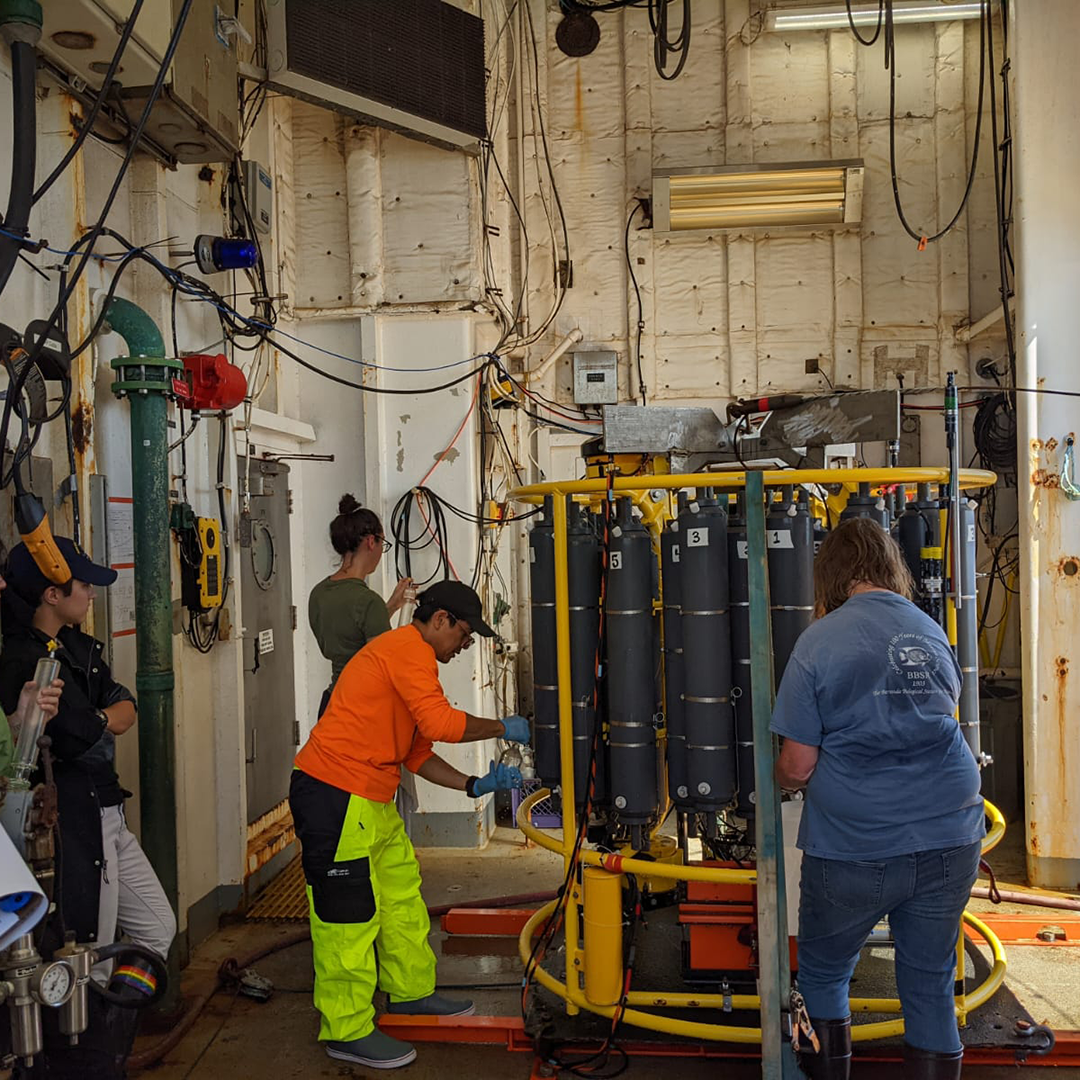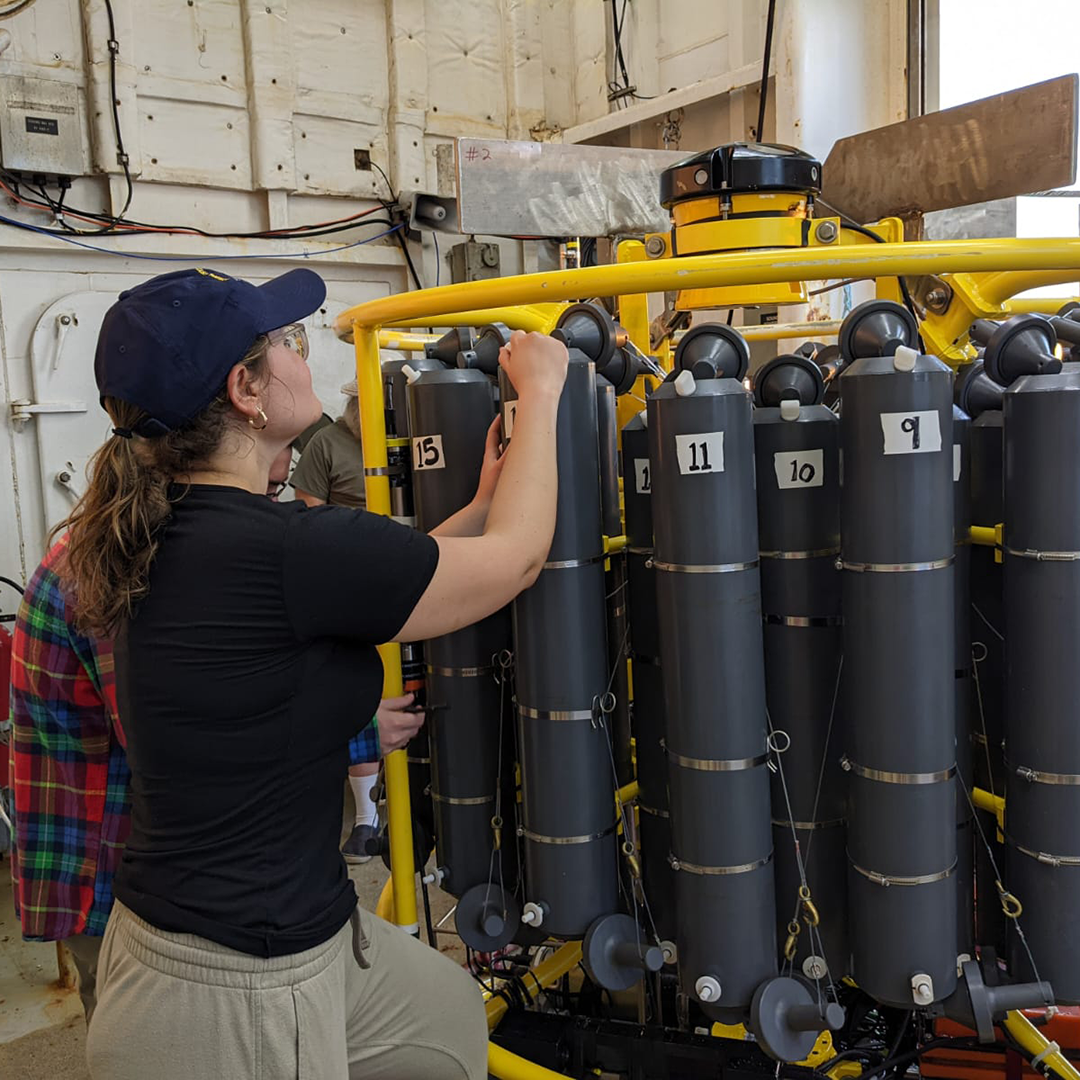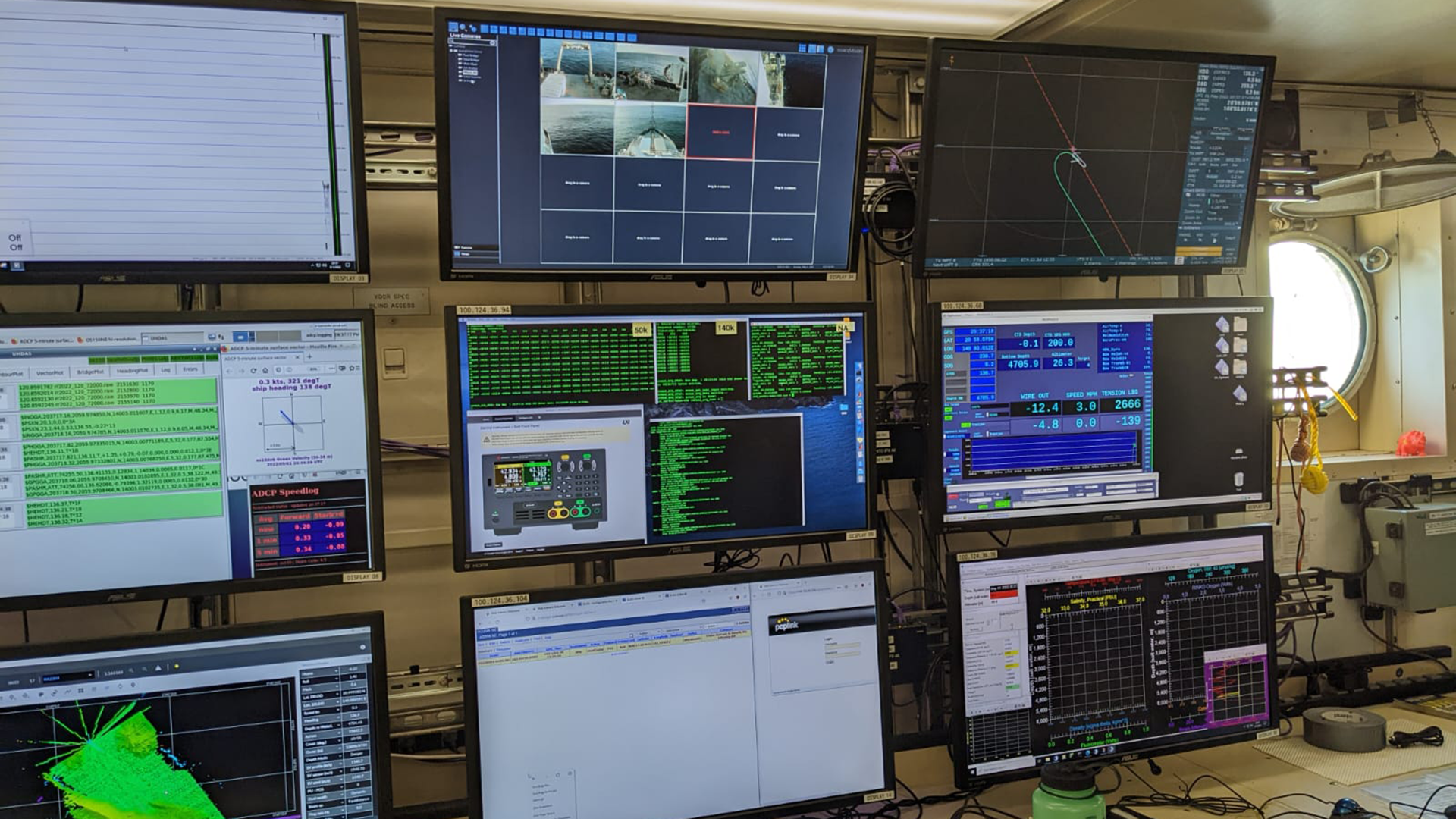GO-SHIP P02: Test Cast, Station 1
Sophie Shapiro, one of the CTD Watchstanders, reports on our first station and test cast.
2 May 2022
Introducing Sophie Shapiro (she/her), one of the CTD Watchstanders, reporting on our first station and test cast.
Although our ship started out from Guam, our science mission begins just off the coast of Japan. On the way there, we stopped to do a test cast to make sure all of our sampling equipment was in working order and to give the scientists a chance to practice taking water samples and measuring all the different water properties we are interested in. The test cast went well and now we are excited and ready for the real work to begin!
In Photo 1, Lauren Moseley prepares the Bullister bottles on the Rosette for deployment. These long gray bottles are also known as “Niskin” bottles. On our cruise we have 36, each one is assigned a number (see the number 15 in the image). Before the cast, the bottles are “cocked” (set up so they are open at the top and bottom and held in that position by wires) and then when in the water, the bottles are “fired” (a.k.a. tripped) which releases the wire and snaps the bottle closed. Typically, each Niskin provides a 10L water sample from one depth – unique from the other Niskins, though sometimes we’ll trip several bottles at the same depth. Scientists then take their samples from each bottle.
Photo 1: Lauren Moseley preparing the Bullister bottles on the Rosette for deployment. Photo by Sophie Shapiro.

Photo 2: Scientists sampling from the Rosette after the cast. Photo by Sophie Shapiro.
Scientists take samples from the Rosette after the cast. In Photo 2, Sidney is in the back sampling for CFCs using a long glass “syringe,” followed by Albert Ortiz on Niskin 9 sampling for pH using a glass bottle, and Megan Roadman on Niskin 1, taking a large sample using a big plastic bottle for use in her lab that makes many different nutrient measurements (e.g. nitrate, nitrite, silicate, and phostphate). Others in the picture include Carol Gonzalez who is about to take the next CFC sample, Vic Dina, one of the CTD watch, and in the lower left, you can also see the hand of the “sample cop” – more on that later.
Photo 3 shows the computer lab where the CTD Watchstanders communicate with the winch operators on how far down to deploy the rosette and at which depths we want to collect water. This job requires lots of multitasking! We’ll tell you about that later.


